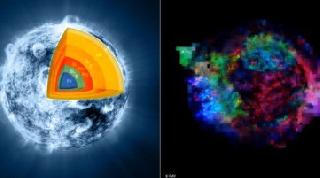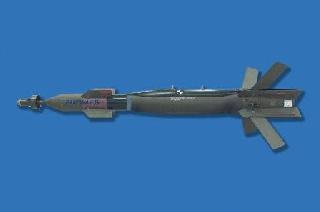
A NASA photo.
WASHINGTON (PTI): Scientists have found remnants of a dead star which they believe was destroyed some 300 years ago in a massive supernova that apparently turned the left over stellar corpse inside out.
Using NASA's Chandra X-ray Observatory spacecraft, a team from Goddard Space Flight Center and Johns Hopkins University in the US mapped the distribution of elements in the supernova remnant Cassiopeia A (Cas A), located about 11,000 light-years from Earth.
They found that nearly all the iron of the star's core was expelled to the outer regions when it went supernova some 300 years ago.
The researchers believe that the star Cas A likely had an iron-rich core that was surrounded by layers of sulphur and silicon, which were in turn overlaid by magnesium, neon and oxygen, SPACE.come reported.
Chandra's observations showed that, after the explosion, most of that iron has now migrated to Cas A's outer edges.
Neither Chandra nor NASA's Spitzer Space Telescope, which is optimised to see in infrared wavelengths, has detected any iron near the supernova remnant's centre, where the element was originally formed, the researchers said.
Further, much of the silicon, sulphur and magnesium are now found on the outside of the still-expanding debris shell.
Neon distribution hasn't changed much, and not much can be said about the oxygen because its X-ray emissions are strongly absorbed along the line of sight to Cas A, they said.
Overall, this distribution of elements suggests that instability in the supernova explosion process somehow turned the star inside out. These latest Chandra observations, which are based on more than 11 days of observing time, are the most detailed study ever made of X-ray-emitting debris in Cas A, or in any other supernova remnant, the researchers detailed in the Astrophysical Journal.
They estimate that the total amount of X-ray emitting debris has a mass just over three times that of our Sun. And the finding of clumps of pure iron indicates that this material must have been produced by nuclear reactions near the centre of the pre-supernova Cas A.
The Chandra X-ray Observatory launched aboard the space shuttle Columbia in 1999 and has been observing the heavens ever since.
 Previous Article
Previous Article Next Article
Next Article













The Indian Air Force, in its flight trials evaluation report submitted before the Defence Ministry l..
view articleAn insight into the Medium Multi-Role Combat Aircraft competition...
view articleSky enthusiasts can now spot the International Space Station (ISS) commanded by Indian-American astr..
view article